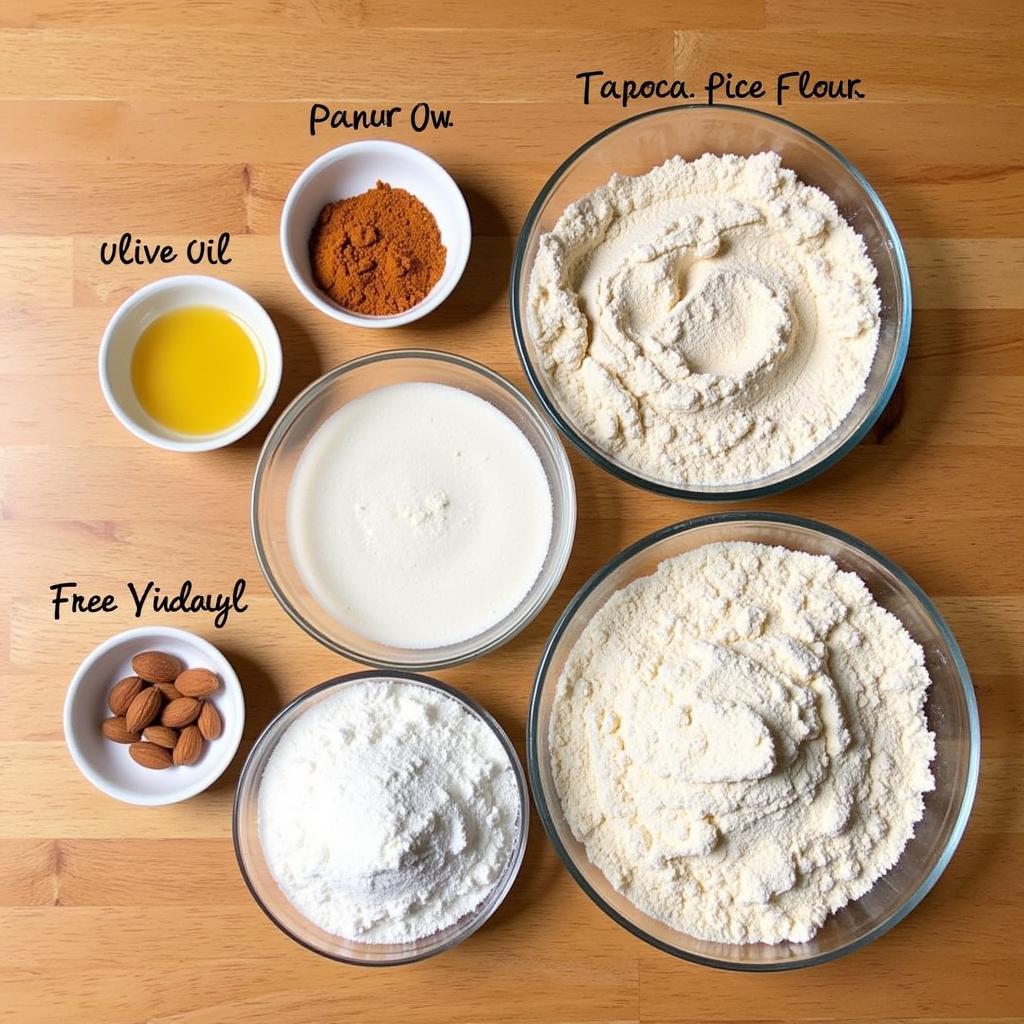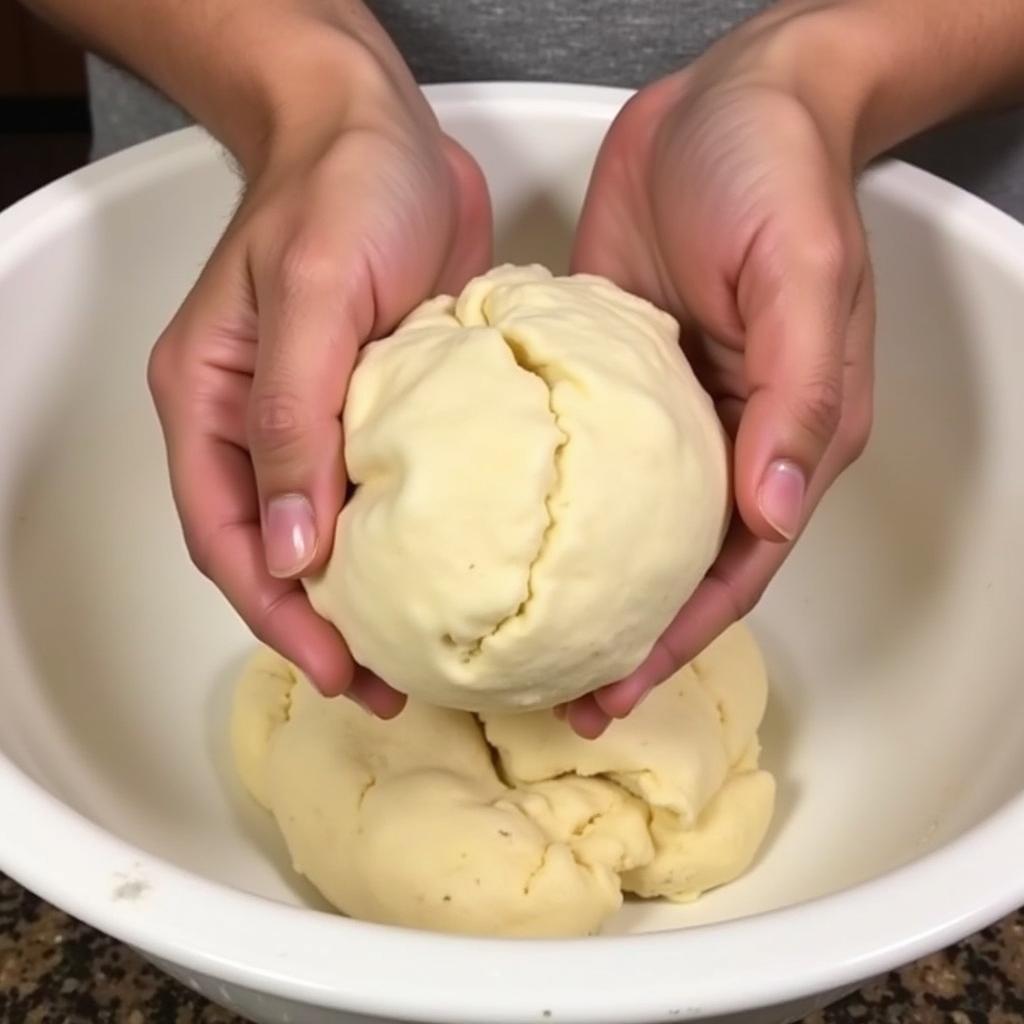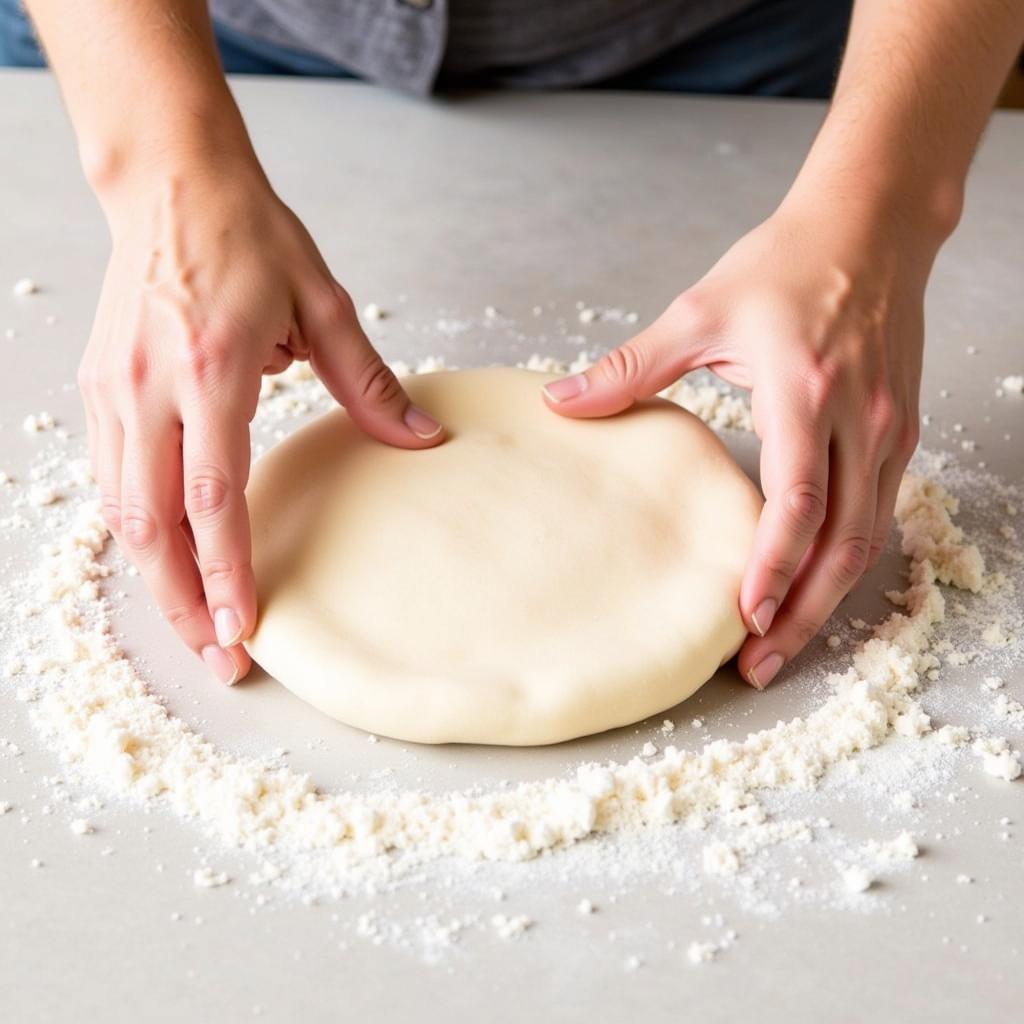Making your own gluten-free pizza dough can seem like a daunting task, but it doesn’t have to be. With this guide, you’ll be able to create delicious and easy gluten-free pizza dough balls that are perfect for any occasion. We’ll explore different gluten-free flours, share tips for the perfect texture, and even provide a go-to recipe that will have you spinning homemade pizzas like a pro.
 Various gluten-free flours and ingredients arranged on a table
Various gluten-free flours and ingredients arranged on a table
Choosing the Right Gluten-Free Flour
Finding the right blend of gluten-free flours is key to achieving a pizza crust that boasts both flavor and texture. While there’s no single “best” flour, here’s a breakdown of popular choices:
- Brown Rice Flour: Provides a slightly nutty flavor and chewy texture. It’s a good base flour but is best when combined with others for a less gritty result.
- Tapioca Starch: Adds a wonderful chewiness and helps with browning. Use it sparingly though, as too much can make the dough gummy.
- Almond Flour: Creates a tender crumb and adds a subtle sweetness. However, it’s important to note that almond flour is lower in carbohydrates and higher in fat, so it will yield a slightly denser crust.
- Sorghum Flour: Known for its neutral flavor and light texture. It’s a great all-purpose gluten-free flour that can be used independently or blended with others.
- Xanthan Gum: Acts as a binder in gluten-free baking, mimicking the elasticity of gluten. Just a teaspoon is usually enough for a standard pizza dough recipe.
 Hands kneading gluten-free pizza dough in a bowl
Hands kneading gluten-free pizza dough in a bowl
Tips for Perfect Gluten-Free Pizza Dough
- Use Warm Water: Just like traditional yeast doughs, gluten-free dough needs warm water (around 105-110°F) to activate the yeast.
- Don’t Overmix: Gluten-free doughs can become dense if overworked. Mix until just combined.
- Let It Rise: Allow the dough to rise in a warm, draft-free place for at least 30 minutes, or until doubled in size. This allows the yeast to ferment and create air pockets, resulting in a lighter texture.
- Preheat Your Pizza Stone or Baking Sheet: A hot surface is crucial for a crispy crust. Preheat it in the oven while the dough rises.
- Don’t Overload with Toppings: Keep the toppings light to prevent the crust from becoming soggy.
Easy Gluten-Free Pizza Dough Ball Recipe
This simple recipe is a great starting point for beginners and can be customized with your favorite flavors.
Ingredients:
- 1 cup brown rice flour
- ½ cup tapioca starch
- ½ cup almond flour
- 1 teaspoon xanthan gum
- 1 teaspoon sugar
- 1 teaspoon active dry yeast
- 1 teaspoon salt
- 1 cup warm water (105-110°F)
- 2 tablespoons olive oil, plus extra for greasing
Instructions:
- In a large bowl, whisk together the brown rice flour, tapioca starch, almond flour, xanthan gum, sugar, yeast, and salt.
- Add the warm water and olive oil to the dry ingredients.
- Mix with a wooden spoon or your hands until a dough forms.
- Turn the dough out onto a lightly floured surface and knead for 2-3 minutes, or until smooth.
- Shape the dough into a ball and place it in a greased bowl. Cover with plastic wrap and let it rise in a warm place for at least 30 minutes, or until doubled in size.
- Preheat oven to 450°F with a pizza stone or baking sheet inside.
 Stretching gluten-free pizza dough on a lightly floured surface
Stretching gluten-free pizza dough on a lightly floured surface
Conclusion
Creating delicious and satisfying gluten-free pizza dough balls at home is easier than you think. By choosing the right gluten-free flours, following expert tips, and using a reliable recipe, you can enjoy homemade pizza that’s every bit as good as the gluten-filled version. Remember to have fun, experiment with different flavors, and enjoy the process of creating something delicious from scratch!
FAQs
1. Can I freeze gluten-free pizza dough balls?
Absolutely! Simply wrap the dough balls tightly in plastic wrap and place them in a freezer-safe bag. Thaw overnight in the refrigerator before using.
2. My gluten-free pizza crust always turns out soggy. Any tips?
Make sure to preheat your pizza stone or baking sheet, don’t overload with toppings, and bake the pizza until the crust is golden brown and crispy.
3. Can I use a different type of oil in the dough?
Olive oil adds a nice flavor to the dough, but you can substitute it with other neutral-flavored oils like avocado oil or grapeseed oil.
4. How do I know if my yeast is still active?
To test if your yeast is active, add it to a bowl with warm water and a pinch of sugar. If it foams up within a few minutes, it’s good to go.
5. Can I make this recipe vegan?
Yes, you can easily make this recipe vegan by substituting the honey with maple syrup or agave nectar.
For further inspiration and delicious gluten-free recipes, be sure to check out our other italian gluten free recipes.
Need further assistance? Contact our 24/7 customer service team at 0972669017 or email us at [email protected]. We’re located at 142 Trần Nhân Tông, Yên Thanh, Uông Bí, Quảng Ninh, Vietnam.